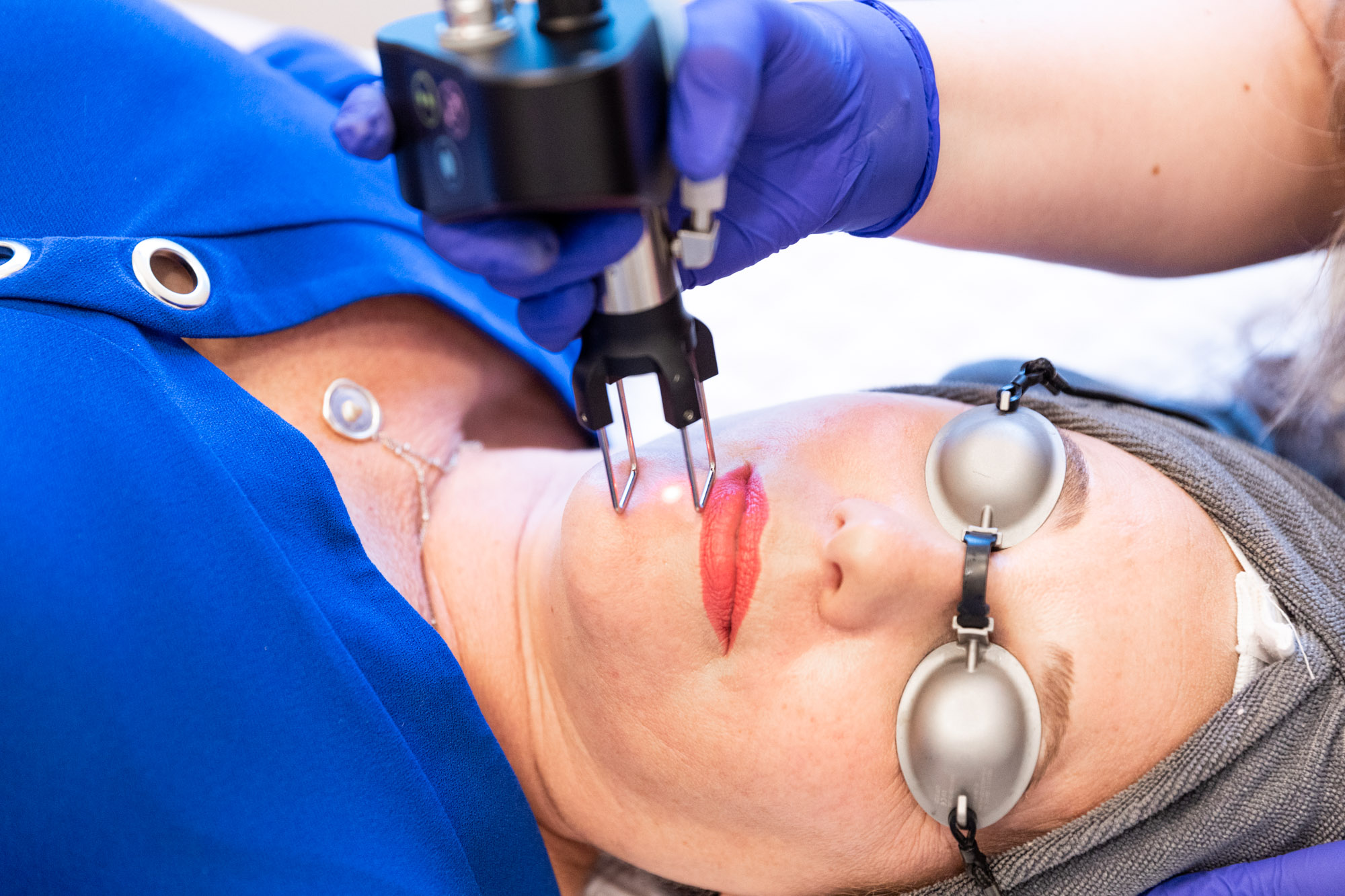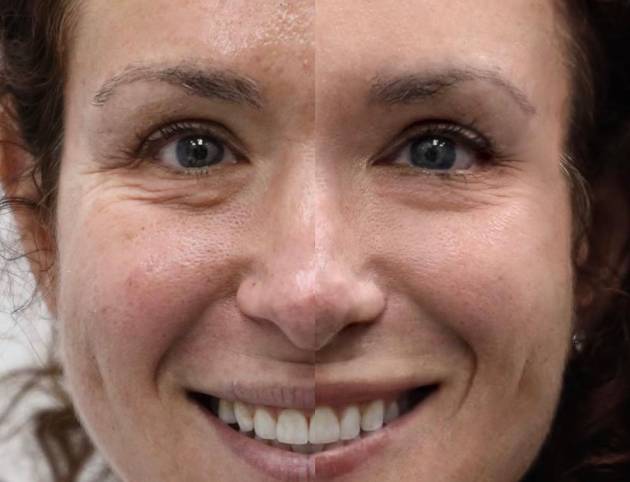
The following events occur after CO2 laser treatment:
- Removing the epidermis takes away its imperfections. They include wrinkles, rough areas, pigmentation problems, and superficial scars.
- The intense laser heat burns away damaged collagen strands and contracts loose collagenous tissue.
- Stripping off the skin’s top surface alerts the immune system and stimulates inflammatory processes. These events lead to the release of substances that induce the body’s natural repair mechanisms. During the healing process, the epidermal cells grow back and the skin produces more collagen. The deeper skin layers also undergo repair and renewal.
So at the end of your recovery, you’ll notice the following changes:
- The superficial blemishes are gone, while the deep ones are significantly reduced.
- The treated area becomes smoother as the new epidermis replaces the old one.
- The skin is tighter and firmer due to the contraction and enhanced formation of collagen.
Overall, you get younger-looking, more even-toned skin that you can’t have from years of applying cosmetic products alone.
CO2 Laser Resurfacing
Many people start their skincare journey with cosmetic products. They’re easy to use, have tolerable or no side effects, and make us feel good overall. However, they take time to work and address only mild skin issues. Additionally, some become ineffective when the skin changes faster than you can treat it.
CO2 Laser Skin Resurfacing—What Is It, and How Does It Work?
Understanding how the treatment works requires knowledge about lasers and their effects on the skin. Simply put, lasers are powerful, narrow-spectrum light beams. In dermatology, carbon dioxide laser, aka “CO2 laser,” is invisible, far-infrared light with a length of 10,600 nanometers generated from carbon dioxide. Water molecules selectively and highly absorb light of such a wavelength.
The epidermis—the topmost layer of the skin—is sensitive to CO2 laser beams. When CO2 lasers hit the skin, the energy heats up and vaporizes epidermal water molecules and, with them, the epidermal cells. In the hands of a skilled laser dermatologist, CO2 lasers can strip off the epidermis with minimal damage to underlying tissues. The CO2 laser is an ablative laser because it removes the skin’s superficial layers.

What Is the Difference Between Fractional and Non-Fractional CO2 Laser Treatment?
Fractional CO2 laser treatment exposes your skin to small, thin columns of laser light instead of wide beams. One pass of the equipment creates multiple micro-sized injuries rather than one continuous area of damaged skin tissue. Fractional lasers reduce heat injury to the skin and its side effects. They also produce multiple mini-repair sites, so recovery is usually faster.
What Skin Problems Can CO2 Laser Resurfacing Treat?
CO2 laser therapy is highly recommended for severely sun-damaged skin, the symptoms of which include the following:
- Fine and coarse wrinkles
- Dyspigmentation and other forms of skin discoloration
- Spider veins
- Loss of elasticity
It is also highly effective in improving the following skin conditions:
- Post-surgical, chicken pox and acne scars
- Stretch marks
- Pigmentation issues like melasma and brown spots
- Rhinophyma or severe pore enlargement of the nose from conditions like rosacea
CO2 laser resurfacing is an alternative treatment option for benign skin growths like actinic keratosis, warts, and moles, as well as superficial non-melanoma skin cancers. Consider this procedure if you have a skin problem unresponsive to other therapies or when facial plastic surgery is contraindicated.
What Are the Biggest Benefits of CO2 Laser Resurfacing?
Knowing how CO2 laser treatment works makes it easier to appreciate its upsides, the most important of which are the following:
1. Superior Cosmetic Results
CO2 laser resurfacing treatment is considered the gold standard for rejuvenating photoaged skin. Its cosmetic outcomes are superior to non-ablative procedures like Vbeam and intense pulsed light. Experts attribute this to its greater ability to induce the skin’s healing response and tighten loose collagen strands.
Fractional CO2 laser resurfacing yields comparable results to the non-fractional technique, but it has the advantage of having an easier recovery period.
